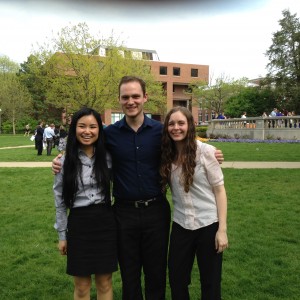Where Have All The Teachers Gone?
A look at the teacher shortage in Wisconsin
Data obtained from the University of Wisconsin-Madison show the university’s School of Education has seen more than a 52% decline in applications between the ’10-11 and ’14-’15 school years. In 2010, there were 329 applicants to the school of education, for ’14-’15 there were 155.
The picture of this teacher shortage is even starker at the two largest education schools in Milwaukee. Both Marquette University and the University of Wisconsin-Milwaukee have reported significant drops in enrollment in their teaching programs. Marquette University’s enrollment dropped from 445 students in 2010 to 385 in 2014. The University of Wisconsin-Milwaukee School of Education’s enrollment dropped from 2,135 in 2010 to 1,516 in 2014.
The question then becomes, why is there a sudden drop off in teachers?
Over the last few years polling shows teachers have become increasingly disillusioned about their jobs and the field of education as a whole.
Educators cite low pay, under resourced schools, increased testing requirements, loss of job protections, and unfair teacher evaluations as contributing factors to low morale. It’s no surprise schools with budgetary problems are seeing teacher shortages. In Wisconsin, Governor Walker’s K-12 budget, which proposes cutting $150 per pupil in coming school year, is certainly not helping with the teacher shortage.
Those enrollment drops may be canaries in our mine shaft. But I don’t know that this matter requires exhaustive research. I’d say it’s pretty simple. Teaching has never paid very well, at least in most areas of the country, but the creativity and intangible rewards made up for that lack of money. Happy kids, praise from administrators and parents, and the chance to create original lessons kept many teachers in the game, even if the pay was mediocre.
As new Common Core demands straitjacket expectations, while administrators plan the whole year’s lessons, and Charlotte Danielson’s teacher evaluation rubric results in 21 page evaluations that almost necessarily contain a fair number of negatives even when they contain many positives — teaching becomes less appealing. Many teachers have become disenchanted in the last decade and those teachers are talking.
“I would never tell anyone to go into teaching nowadays. They blame us for everything,” a favorite colleague recently said to me,
He’s a great teacher. My feelings have not yet become so negative, but a few years ago, I told a friend of my daughter’s that if she did go into teaching, she might want to consider teaching in a higher-income, higher-scoring area.
“They are holding you responsible for your students test scores,” I explained to the girl, “no matter what the students know when they come into the classroom. They will also tell you what you have to teach. Then if the kids don’t improve enough, they may fire or replace you, no matter how hard you worked. Your life will be a lot easier if you stay away from lower-scoring schools.”
The girl has since graduated from college and has taken a position with a software company. I don’t know that I talked her out of teaching, but I certainly did not talk her into it. Quite possibly the money in tech would have drowned out anything I might have said anyway.
A last quote from “Education Week,” published in print on October 22, 2014, as “Steep Drops Seen in Teacher-Prep Enrollment Numbers”:
“Separate state-by-state enrollment data collected under Title II of the Higher Education Act, meanwhile, suggest that the decline in teacher-preparation enrollments has accelerated in recent years, particularly since 2010. Under that collection, California, New York, and Texas, among the largest producers of teachers, have seen steep drops.”
Those enrollments are our teacher pipelines. Stay tuned. In five or ten years, I anticipate this situation will become the next crisis in education manufactured by government intervention — a genuine shortage of educators.
We still have plenty of history and early childhood teachers, but teachers who can (or will) teach coding and calculus are getting thin on the ground. High school Spanish and science positions can be difficult to fill in many locations. We will not fix that shortage of available teachers by making teaching less creative, while taking away job security and belittling teachers in evaluations, even as we add more students to increasingly larger classes.
We might make some dent in the impending shortage by increasing salaries, however.
Eduhonesty: For what it’s worth, I predict pay increases. As with the nursing shortage a few decades back, the upcoming teaching shortage will necessarily push pay up. In the end, teachers are not optional. We can’t stop teaching high school math and science. If we can’t get teachers to sign on for what we pay now, salaries will have to go up.

